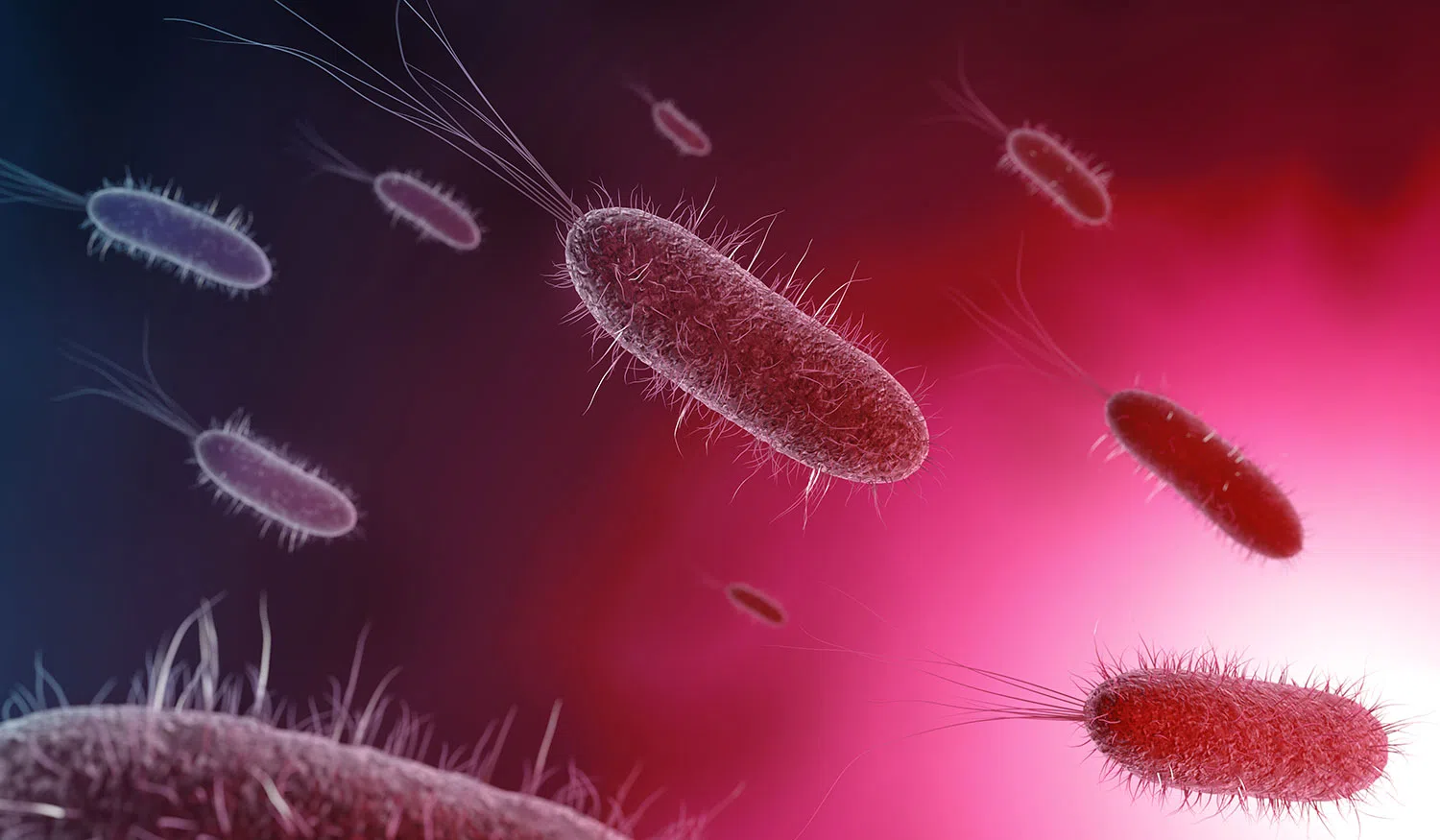A more detailed look at UTIs. What causes a UTI?

Escherichia coli (E. coli) is the most common cause of UTIs (Urinary Tract Infections), in about 80 percent of cases.
Escherichia coli (E. coli) is a specie of bacteria that normally lives in the gut. However, when found outside the gastrointestinal tract, they can be the main cause of infections and illnesses like UTI, pneumonia, bacteremia, and peritonitis, among others. Unfortunately, one of the most common reasons for hospitalization or the frequent use of antibiotics are UTIs1. Approximately 3.2 million cases of UTIs were reported among women in the United Kingdom in 2023 alone and the trend is only expected to increase over the next few years2.

What is a UTI?
In general, UTIs are classified as uncomplicated and complicated infections3.
Uncomplicated UTIs affect healthy individuals with no structural or neurological abnormalities of the urinary tract. Depending on the location, these infections are divided into:
lower urinary tract infections - cystitis, urethritis, etc.
infections of the upper urinary tract – pyelonephritis3.
Usually, the microorganisms reach the urinary tract by ascending the urethra, particularly microorganisms originating from the large intestine. Most often this organism is Escherichia coli (E. coli). This and the shorter urethra in women explain the higher incidence of these infections in women, as well as the increased risk of infection after catheterization or other intervention on the urinary bladder4.

Uncomplicated urinary infections in women are predominantly caused by E. coli, which can migrate from the perianal region to the vaginal entrance and urethra. The following factors can increase the risk of developing such infections5:
Sexual activity
Use of contraceptive devices and spermicides
Genetic predisposition to urinary infections
A complicated UTI is any UTI other than a simple UTI which requires special treatment approach other than the common one.
The mechanism of urinary tract infection and virulence of bacterial strains.
The urinary tract is a relatively inhospitable environment for bacteria and therefore bacterial colonization. To successfully colonize, pathogens (disease causing organisms) must resist the frequent exfoliation of the epithelium, as well as the washing effect of the evacuating urine.
Furthermore, not all microorganisms cause urinary tract infections as readily as others. The single most important factor for urinary tract colonization is the ability of the uropathogens to adhere to the urothelium4 (lining the surface of the bladder). Over 80% of the uropathogenic bacteria are capable of attachment to urothelial cells6.
Most bacterial species, causing UTIs, are equipped with special virulent factors – organelles (sub-cellular structures) called fimbriae or pili, supporting their attachment to and ascending4 of the bladder.
As mentioned, the most recognized disease-causing pathogen for both uncomplicated and complicated UTIs are uropathogenic E. coli3. They possess the ability to bind via fimbriae to specific receptors on the surface of the urinary tract. Fimbriae are small thin fibers appended to the surface of the bacterial cells, which are responsible for their adhesion to the epithelium layer.
Fimbriae are divided into two main groups – type 1 fimbriae and type P fimbriae.
Type 1 fimbriae are the most common virulent factor, expressed by E. coli. They determine bacterial virulence in urinary bladder infections. It has been established that almost all E. coli strains, which cause acute cystitis, express type 1 fimbriae. Type 1 fimbriae mediate bacterial adhesion to a mannose-containing receptor widely spread on the epithelial cells surface in urinary tract.
Type P fimbriae are the second most important factor for adhesion of pathogenic bacteria to urinary tract epithelial cells. Type P fimbriae are expressed by the majority of E. coli strains, causing acute pyelonephritis (90%) and by several strains responsible for asymptomatic bacteriuria4.
As a result of the binding of both fimbria types to the uroepithelial cells, uropathogens adhere to the epithelium, multiply, colonize and form a steady biofilm. The regulated expression of type 1 and type P fimbriae allows the bacteria to move through the urinary tract and to reach the kidneys via the ureters. This makes the choice of treatment and the time for reaction very important and essential for further development of the UTI.
Other bacteria causing UTIs
E. coli is responsible for up to 80% of UTIs. The other 20% of UTIs are mostly caused by Staphylococcus saprophyticus (15%), Proteus spp. and Klebsiella spp. (3-4%), Neisseria, Chlamydia, Candida (1-2%).
No matter what the bacteria is that is responsible for the UTI, this condition requires proper diagnosis e.g. a visit to the GP and a lab test and treatment with antibiotics or natural remedies like d-mannose and cranberry extracts.
Mueller M, Tainter CR. Escherichia coli Infection. StatPearls Publishing LLC; 2023. https://www.ncbi.nlm.nih.gov/books/NBK564298/
Urinary tract infections (UTIs). Web Page. National Health Service. Updated 22 March 2022. Accessed 27.05.2024, 2024. https://www.nhs.uk/conditions/urinary-tract-infections-utis/
Flores-Mireles AL, Walker JN, Caparon M, Hultgren SJ. Urinary tract infections: epidemiology, mechanisms of infection and treatment options. Nat Rev Microbiol. May 2015;13(5):269-84. doi:10.1038/nrmicro3432
Baby S, Karnaker VK, Rk G. Adhesins of Uropathogenic Escherichia Coli (UPEC). 2016:
Hooton TM, Scholes D, Hughes JP, et al. A Prospective Study of Risk Factors for Symptomatic Urinary Tract Infection in Young Women. New England Journal of Medicine. 1996;335(7):468-474. doi:doi:10.1056/NEJM199608153350703
Gunther NWt, Lockatell V, Johnson DE, Mobley HL. In vivo dynamics of type 1 fimbria regulation in uropathogenic Escherichia coli during experimental urinary tract infection. Infect Immun. May 2001;69(5):2838-46. doi:10.1128/iai.69.5.2838-2846.2001